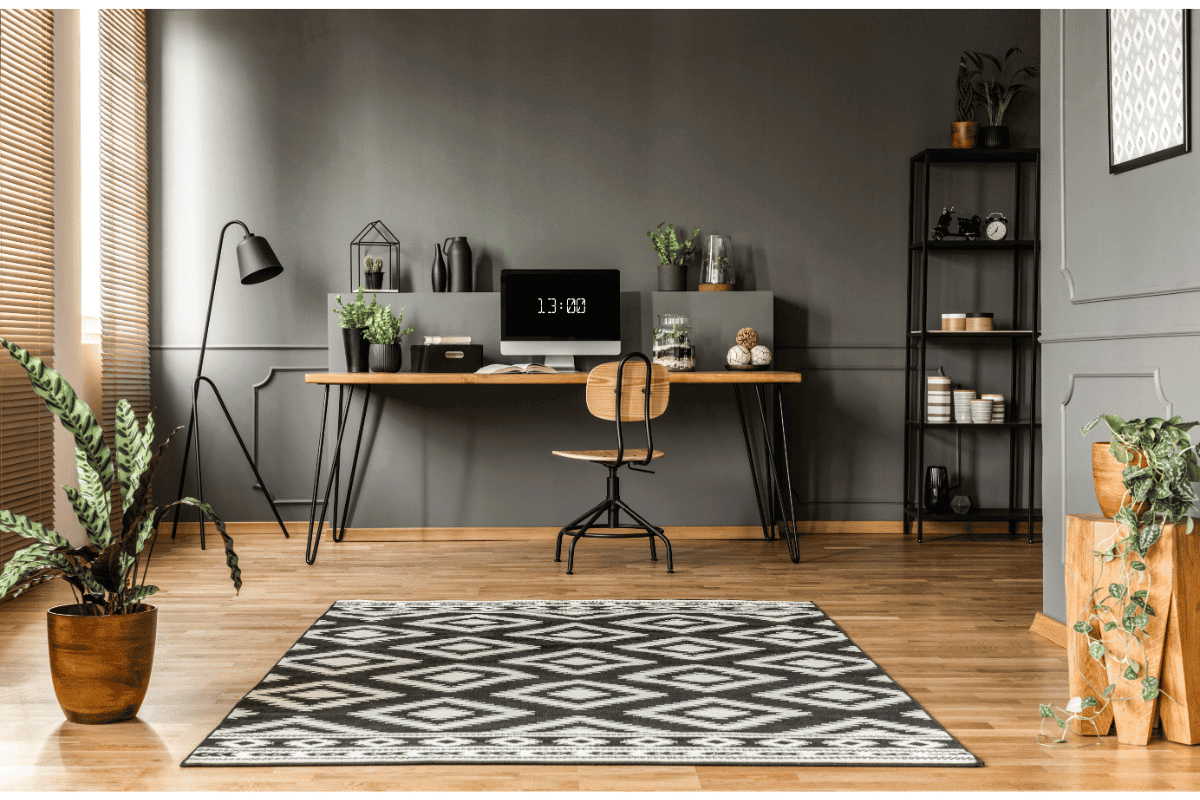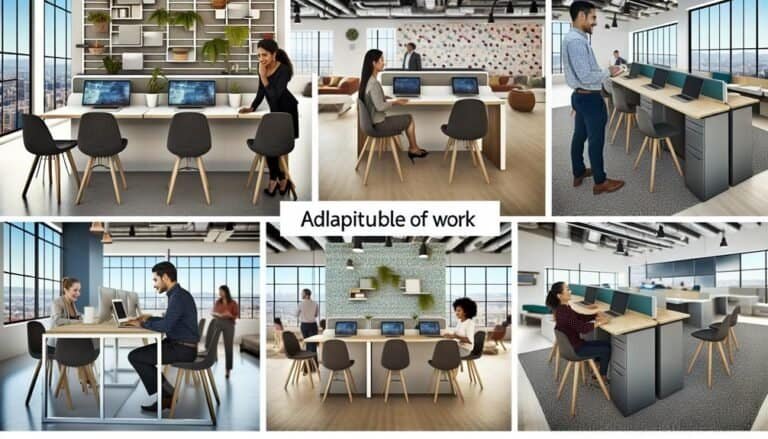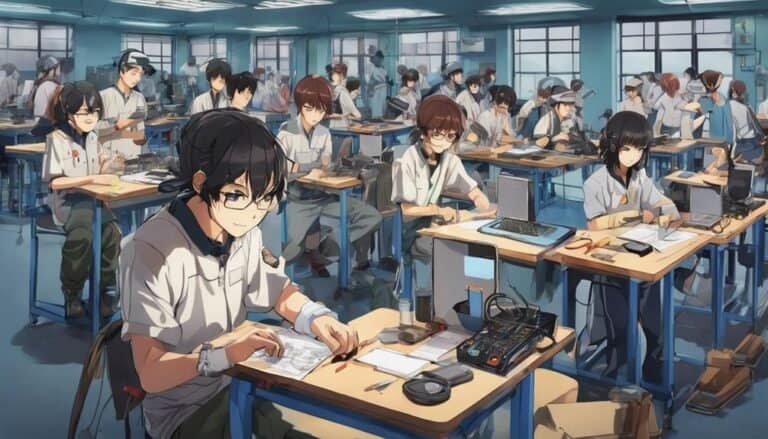The Evolution of Work in the 21st Century
The evolution of work in the 21st century is picking up even more momentum since the COVID-19 pandemic. Now, we are not only talking about a possible return to our physical workplaces but also about a long-term future in which home offices exist … if not as a norm, at least as a semi-permanent solution for many of us. By 2025, the home office will be a very different workplace. Not only will it be a more technologically advanced way of working, but it will also serve as a better-designed and better-planned environment in which to exist while working. This article discusses where we think the home office will be in 2025.
1. Integration of Intelligent Technology
One of the most important directions in home office design is toward intelligent technology. This means that desks and other office features are not just simple fixtures of a certain style but are part of an integrated system that can communicate with the user in ways that help maintain an illusion of presence and, therefore, a more natural balance of energies in the home office space. They are not just beautiful things; they interact. By 2025, we can expect to see even more advanced options, such as a system of home office components that can monitor the user’s vital signs and adjust temperature, lighting, and even other sounds in the home office to keep the user in an optimal state of comfort and concentration.
a. Intelligent Workspaces
Echoing devices like the Amazon Alexa, Google Assistant, and Apple’s Siri are bound to play a large part in the home office of 2025. These voice-controlled smart assistants can manage schedules, set reminders, and operate other smart devices and systems in the home, all with a bit of conversational magic. Picture this: you walk into your home office and say, “Good morning, Assistant.” At that moment, your workspace lights up—not with harsh fluorescents, but with warm-toned LEDs, perfectly calibrated to heighten your senses as you transition into work mode.
b. Assistants that Work by Commanding a Voice
How we work is bound to change, and for the better, in this still new decade. The increasing power of artificial intelligence (AI) promises dramatic improvements in office productivity and personal workflow. By 2025, tools that take commands and give responses in natural language will work alongside us in the spaces where we conduct most of our work. These office assistants—“Intelligent Personal Assistants,” or IPAs, as they are increasingly called—will learn our preferences over time and help us manage basic but critical tasks with the same ease that we now take for conversational speech.
c. Tools That Run on AI
As AI advances, more tools will emerge to streamline workflows in home offices. AI-powered systems will handle everything from scheduling to document management. These tools will evolve to be more intuitive and responsive, increasing efficiency and enabling workers to focus on more complex tasks, leading to enhanced productivity in home office setups.
2. Ergonomics
Home office design will put a major emphasis on ergonomic principles by 2025. Standard across office furniture will be adjustability—of chairs, desks, and any other components that make up a workstation. Users will have even more ways to customize their setups. The manufacturers of work furniture will have embraced 3D printing so that individualized components can be made on demand, and they’ll also offer virtual reality previews to help users envision their way to a more comfortable, risk-free workspace.
a. Furniture That Adjusts
Ergonomic furniture will evolve with innovative adjustments tailored to user needs. By 2025, expect to see fully customizable chairs and desks that can be adjusted with minimal effort to meet the specific height, angle, and support requirements of each user. These enhancements will help minimize physical strain and create a healthier work environment.
b. Biophilic Design
Biophilic design is the new kid on the block—no pun intended. The concept of biophilia has been around for quite some time and was made famous by Edward O. Wilson, a biologist who proposed in the early 1980s that people have an instinctive bond with nature. Humans are hardwired to be around the natural world, and this primal connection speaks to our very essence. Wilson’s idea set off a chain reaction in environmental design and architecture, with the benefits of sunlight, fresh air, and access to nature becoming the baseline for achieving high-performance buildings.
c. Apt Sound Management
As more people work from home, they will need to manage sound in their home offices much as they do in traditional workplaces. They can create a quiet atmosphere in several ways: with acoustic panels, soundproofing materials, and noise-canceling technology. In 2025, we may even see smart systems that take the guesswork out of sound management. These systems will adjust to the various levels of ambient noise and provide what architects and designers call a “biophonic” space—a home office that sounds good enough to work in.
3. Attractiveness
Reflecting the homelander’s personal taste, the office of 2025 will bristle with decoration options that can be tailored in a myriad of ways—works of art, color choices, and style of furniture are just a few. More would-be office occupants can expect to see this premise emphasized: that the un- and re-slotted home office is an extension of personal branding.
a. Tailored Architecture
With increasingly sophisticated tools, home offices will adopt tailored architecture that suits both the space and the user. Custom designs, ranging from foldable desks to modular storage solutions, will optimize space use without compromising aesthetics. These custom solutions will create workspaces that are as beautiful as they are functional.
b. Spaces with Multiple Functions
With living spaces shrinking, the ambiance of our homes becomes increasingly vital—especially as telecommuting consumes a greater portion of our workdays. The tiny home movement, powered in part by the accessible design principles of the mid-20th century minimalist movement, continues apace. High-function furniture pieces that are also aesthetically pleasing; rooms that prepare for living, working, and sleeping to blur together; and built-in multi-use features will define personalized decor going forward.
c. Lighting as a Key Element
A profoundly productive home office hinges upon one key element: lighting. In 2025, the kind of futuristic “light” works you experience now at the Apple Store will be the norm, with the state-of-the-art smart systems in most homes. They’ll be mimicking the sun with changes in intensity and color as the day progresses and will be fully integrated with the other systems in the house, responding not just to your commands (some of which they’ll anticipate) but also to the variable conditions of your health, the weather, and your environment at large.
4. Sustainable Solutions and Eco-Friendly Choices
The home office offers an opportunity for working sustainably. Designers can specify furnishings and finishes that fulfill the increased demand for sustainable materials. By 2025, we can expect to find recycled, reclaimed, or sustainably sourced materials in desk lamps, tables, chairs, and more. Even the light emitted by the LED bulbs in these distinctive lamps can be considered sustainable; LEDs have a much longer lifespan than incandescent light bulbs.
a. Sustainable Materials
Sustainable materials will be the cornerstone of home office furnishings. By 2025, desks and chairs will be made from recycled or responsibly sourced materials, reducing the carbon footprint of home offices. These materials will not only provide environmental benefits but also ensure durability and longevity for home office products.
b. Appliances Consuming Less Energy
The smart home office of 2025 will take energy efficiency into account. Printers, computers, and all kinds of lighting will be set up to work at minimal energy consumption. The real-time energy metrics that smart home technology can provide will also play a part in the smart home office’s energy efficiency narrative.
c. Waste Reduction Attempts
To reduce waste effectively, you will need to make a number of changes to your home office. The core of these changes will involve employing digital filing systems to reduce the number of documents you print. Composting reduces the nearly 250 million tons of organic waste that goes to landfills each year; soybeans and other pulses can replace meat in “green” home-office lunches. Again, we need to ensure by 2025 that recycling stations even exist for our work.
5. Health and Well-Being
The continued prioritization of the mental and physical well-being of employees is predicted to become even more pronounced in the next few years. By 2025, it is forecasted that home office designs will incorporate specific areas for wellness. These zones will likely serve dual purposes, making the most of the space within the home office. Like many offices today, the home office of the future will promote physical activity and quiet time within the workspace.
a. Wellness in the Home Office
The future home office will include wellness zones that offer spaces for physical exercise, meditation, and relaxation. These areas will promote mental well-being, helping workers manage stress more effectively and maintain a healthy work-life balance.
b. The Technology of Mindfulness
In 2025, the home office experience will be unavoidably interwoven with mindfulness and mental well-being. Not just because users may demand it, but because tech companies may increasingly see an opportunity and obligation to enhance the work-from-home experience. They’ll do this by infusing various new offerings with the same qualities that make guided meditation apps or the Headspace service in the smart living room viable: rising to the occasion as a “wellness tool” in moments of high or low stress.
c. Community and Collaboration
As working from home becomes the norm, maintaining a sense of community is vitally important. So how can we stay in touch as we become a more distributed workforce? Tools for virtual collaboration will keep getting better and more lifelike. As with any technological advance, the key is to find the best combination of tools and methods for using them to achieve the goal of connecting remotely without losing any of the emotional warmth that in-person work provides.
Wrapping Up
The home office in 2025 will be a dynamic environment that puts smart tech, ergonomic and aesthetic design, and sustainable, healthful living at the forefront. As the work we do—and the places we do it—continue to evolve, the home workspace must keep up with changing expectations. In the not-so-distant future, individuals will have even more control over the design and function of their home offices. By embracing the latest in technological, design, and environmental innovation, they can create custom workspaces that serve them and the work they do.








